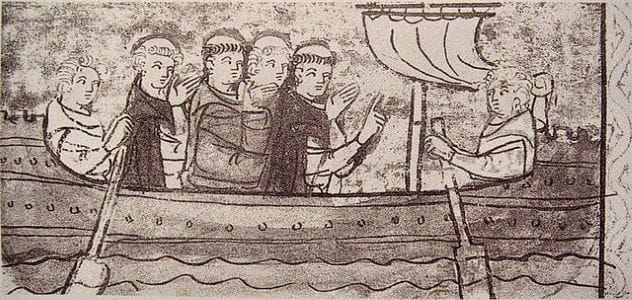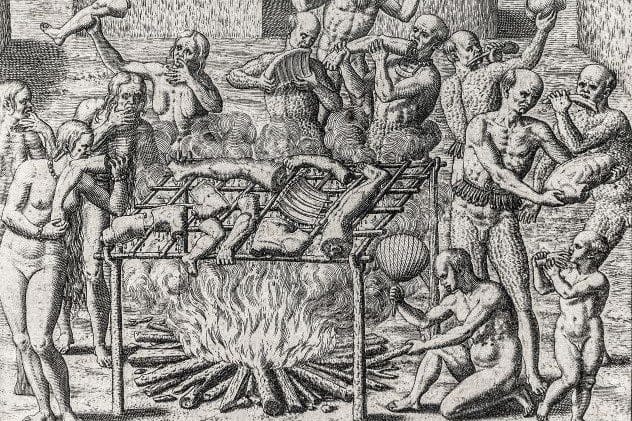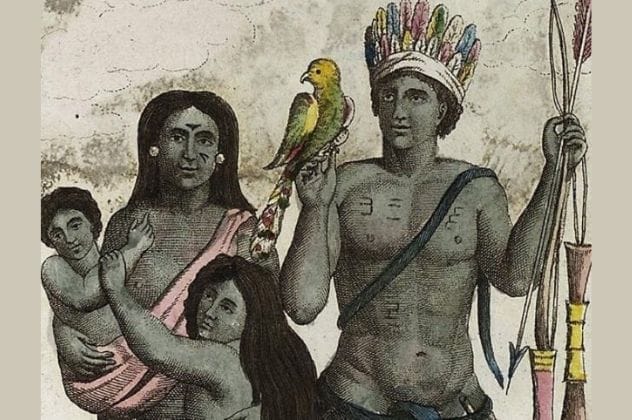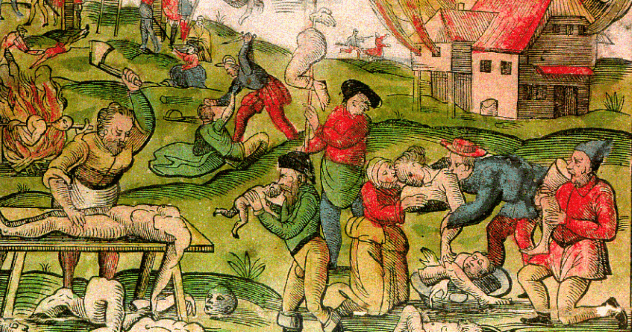Cannibalism has seen a curious resurgence in popular culture recently. From series like House of Hammer and Monster: The Jeffrey Dahmer Story to films such as Fresh and Bones and All, the taboo topic is back in the media spotlight. Even Shakespeare delved into it in Titus Andronicus.
While these stories often focus on adults, there’s a more disturbing and often overlooked chapter of history: the cannibalism of children. This practice, sometimes called filial cannibalism, has occurred in various contexts throughout the ages. Join us as we uncover ten terrifying cases from the medieval period that shed light on this grim aspect of our past.
10. The People of Lamuri

Odoric of Pordenone, a Franciscan friar living from 1286 to 1331, documented his extensive travels in the 14th century. His accounts, later made famous (and plagiarized) by Sir John Mandeville, introduced influential figures like Columbus and da Vinci to the wonders of the East.
During his journeys, Odoric visited Lamuri, a kingdom in what is now northern Indonesia. He described the local population as unclothed and noted their practice of communal marriage. However, Odoric highlighted a particularly gruesome custom: the people of Lamuri reportedly bought children if they were “plump” enough, or raised them to be so. They chillingly told Odoric that child flesh was the “sweetest meat in the world.”
9. The Siege of Ma’arra
The First Crusade brought unimaginable horrors, and the Siege of Ma’arra in late 1098 in modern-day Syria is a stark example. After conquering Antioch, Crusaders pillaged their way south, eventually reaching the peaceful city of Ma’arra, known for its olives, figs, and grapes. The Crusaders devastated the city, slaughtering thousands.
Beyond the massacre, Ma’arra became a site of rampant cannibalism. Chronicler Radulph of Caen reported that adult “pagans” were boiled in pots, while children were impaled on spits, grilled, and devoured. Fulcher of Chartres, another contemporary observer, wrote that hunger drove the Crusaders to cut flesh from the corpses found in the city, which they then cooked and ate, often rare.
8. The Waldenses
The Waldenses, a Christian movement originating in France in the late 1170s, were founded by Peter Waldo, a wealthy Lyon merchant. Inspired by a song about St. Alexius and grieving a friend’s sudden death, Waldo renounced his possessions and began preaching to the poor. This movement faced severe persecution, especially in the 16th and 17th centuries.
In 1655, the Duke of Savoy issued an edict forcing the Waldenses to attend Mass or leave their homes within twenty days. Choosing exile, they trekked through the Alps in winter. The Duke’s troops pursued them, and on April 24, 1655, a massacre known as the Piedmont Easter began. Writer Peter Liegé documented horrific acts: children were torn from their mothers, their heads smashed against rocks, or ripped apart by soldiers. It’s reported that during these atrocities, troops cooked and ate human limbs, including those of children.
7. The Ming Dynasty
The Ming Dynasty, which ruled China from 1368 to 1644, oversaw significant population growth, trade expansion, and cultural achievements. However, this era also saw the continuation of a disturbing practice that gained traction during the earlier Tang Dynasty: medicinal cannibalism.
In the 700s, physician Ch’en Tsang-ch’i was reportedly the first Chinese doctor to prescribe human flesh for illnesses. This practice had strict conditions: the flesh had to be donated voluntarily, often by a child or child-in-law for a close relative, and the recipient could not know they were consuming human flesh—it was disguised in regular food.
6. The Great Famine of 1315
The 14th century in Europe was marked by the Great Famine, lasting from 1315 to 1322, triggered by a period of severe cold weather and relentless rains. Before this, centuries of mild temperatures had allowed farming on marginal lands, leading to a population boom. When these lands failed due to frosts and floods, millions faced starvation, leading to widespread unrest.
Towns were hit hardest. Corpses piled up in the streets, and stories of child abandonment and cannibalism became disturbingly common. It’s believed that the prevalence of child cannibalism during this desperate time inspired the dark folk tale of “Hansel and Gretel.”
5. The Tupinambá

The Tupinambá are an indigenous group from the eastern coast of Brazil, known for their farming, fishing, and unfortunately, a history of warfare and alleged cannibalism. Their villages, home to hundreds, were frequently engaged in conflict with neighboring groups.
Manuel de Nóbrega, a Jesuit priest who founded the Jesuit mission in Brazil in the 16th century, wrote about the Tupinambá in his Reports on the Lands of Brazil. He described their wars as driven by deep-seated hatred. Captured enemies were kept as prisoners, their daughters sometimes taken as wives, before the prisoners were eventually killed in celebratory rituals. Their bodies were smoked and eaten. Nóbrega also noted that if these enemies had children, they too were consumed.
4. The Caribs

The Caribs, indigenous peoples of northern South America, were first reported to practice cannibalism by Christopher Columbus. Amerigo Vespucci later wrote that the Caribs consumed human flesh, eating all enemies, regardless of gender.
Padre Augustin de Frias, observing Caribs in the Guarapiche/Guanipa area, noted a preference for eating young children over adult prisoners. He also mentioned a form of euthanasia where the elderly were eaten to spare them a slow death. However, some historians argue these accounts might have been exaggerated propaganda used by the Spanish against indigenous groups who resisted colonization.
3. The Aztecs
Aztec human sacrifice began in the early 14th century, growing in scale as their empire expanded. They believed human bodies contained vital energy needed to keep the sun moving, thus renewing time, crops, and life itself. Hearts were offered to the sun, and blood was used to coat temple walls.
Children were not spared; they were sacrificed during the first quarter of the Aztec year, often purchased from their parents for this purpose. There are even accounts from Hernando Cortes’s men claiming to have found roasted babies among Aztec provisions, abandoned when the Spaniards were spotted.
2. The Korowai
The Korowai tribe of Papua New Guinea, whose practices were active during the Middle Ages and continue in some forms, engages in a type of revenge cannibalism that can affect children. For centuries, their culture has been steeped in beliefs about sorcery and witchcraft. Lacking modern medical understanding, they attribute unusual behavior or unexplained deaths to malevolent magic.
If someone dying names another person as a sorcerer (khakhua) – and this accusation can fall upon anyone, including a child – that individual is targeted after the death. The accused is captured, shot with arrows, then cooked and eaten. Their dismembered body parts might be displayed as a warning.
1. The Siege of Suiyang
During China’s An Lushan Rebellion, which began in 755, the city of Suiyang faced a brutal siege in 757. General Yin Ziqi, leading a massive rebel Yan army, was ordered to capture Suiyang. The defending Tang army, led by Zhang Xun and Xu Yuan, was vastly outnumbered, with about 6,800 men against 130,000.
Despite initial successes due to clever tactics, the defenders’ food supplies dwindled. Soldiers were soon reduced to eating tree bark and paper. As desperation mounted, the inhabitants of Suiyang reportedly traded their children to be eaten and consumed corpses. In a horrifying act, Zhang Xun killed his own concubine, cooked her, and fed her to his starving troops. When she was consumed, they turned to eating the old and young of the city. Eventually, with no one left to eat and no relief, Suiyang fell, and Zhang Xun was captured.
These accounts from the Middle Ages paint a grim picture of human desperation and extreme cultural practices. They remind us that the shadows of history hold stories that are both difficult to confront and essential to understanding the complexities of the human experience.
What are your thoughts on these grim historical accounts? Share your reflections in the comments below.










